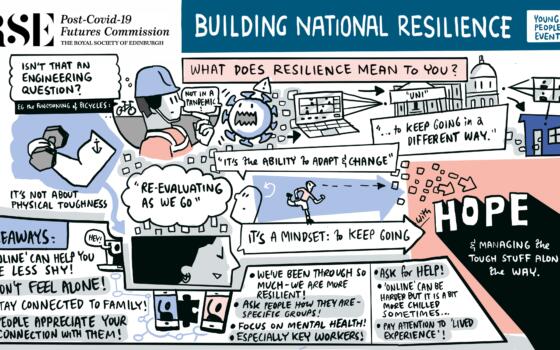What is resilience?
A crucial part of the Building National Resilience working group’s working group’s activity has involved identifying the Key Attributes of resilience. These attributes demonstrate the systemic nature of resilience and highlight that everyone has a part to play in building resilience.
You can see this breakdown below.
Download the Key Attributes of Resilience.
Diversity
- Systems which deliver the same outcome via different methods and routes are more resilient.
- Diversity refers to everything from institutional structures and businesses to supply chains, the natural world and people
Reserve Capacity
- Designing systems that can flex in response to stress.
- This includes creating strategic reserves and sufficient stocks to buffer against supply shortages.
Connectivity
- Well-designed and well-managed connectivity can increase reserve capacity and diversity, providing a buffer against localised stresses.
- For example, energy supply grids which have trans-national interconnectors that can allow power to flow between different national grids provide resilience to cope with short-term power shortages.
Inclusiveness, Equity & Fairness
- Social policies which sustain but also value those in the most marginalised communities need to focus on the power, agency and justice of those who are most disadvantaged. This will help build resilience at both an individual and community level.
- Preventative approaches and early intervention should be used wherever possible to support people and communities.
Adaptive Learning
- Resilience requires rapid adaptation to changes when they happen to reduce negative impacts. Resilient societies can rapidly adapt and learn, becoming more resilient with each challenge they face.
- The rapid adoption of new technologies and especially digital resources has been a key feature of adaptation in response to the pandemic.
Culture of Preparedness
- Preparedness means the proactive planning and management of resilience in the face of a wide-range of risks.
- This requires clear roles for everyone – from Governments to local communities – and high levels of data-sharing, coordination and collaboration.
Learn more about the work of the Building National Resilience working group by reading the Working Group summary report.









